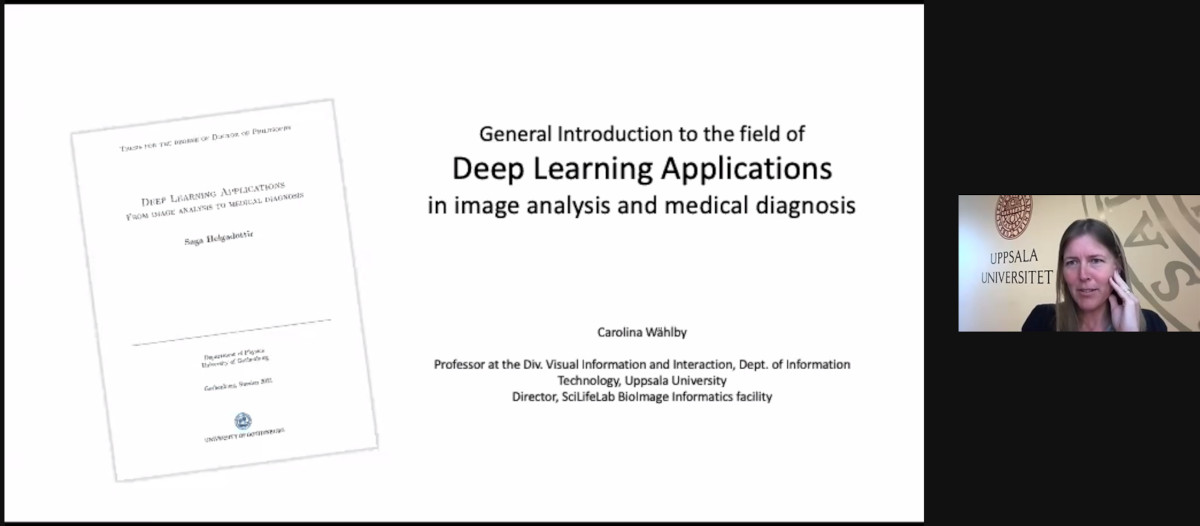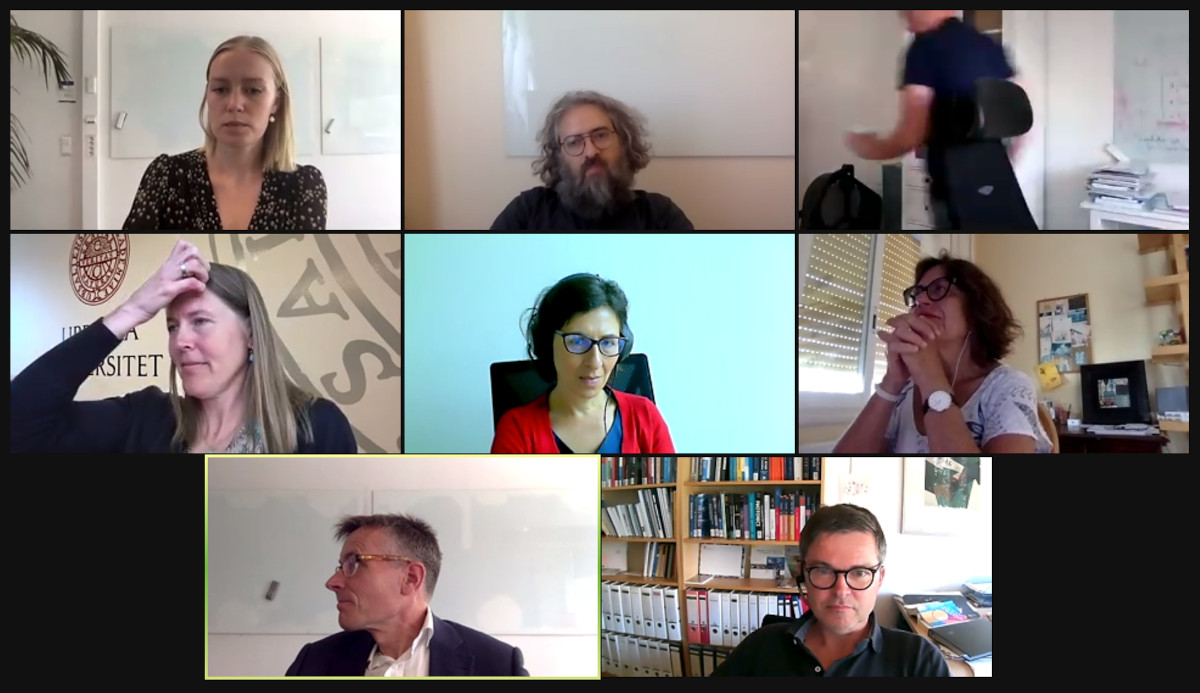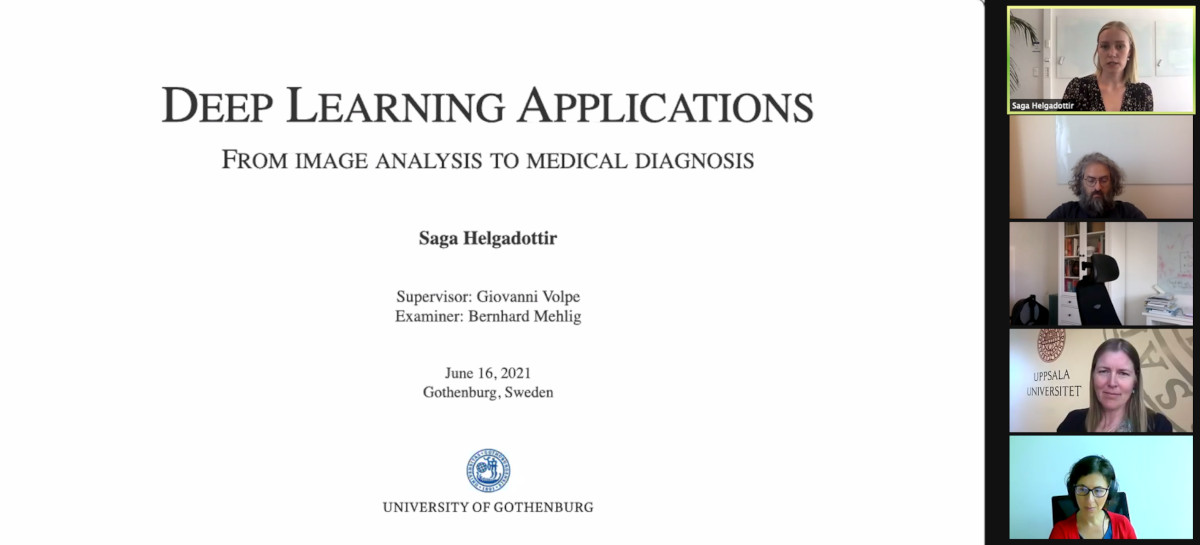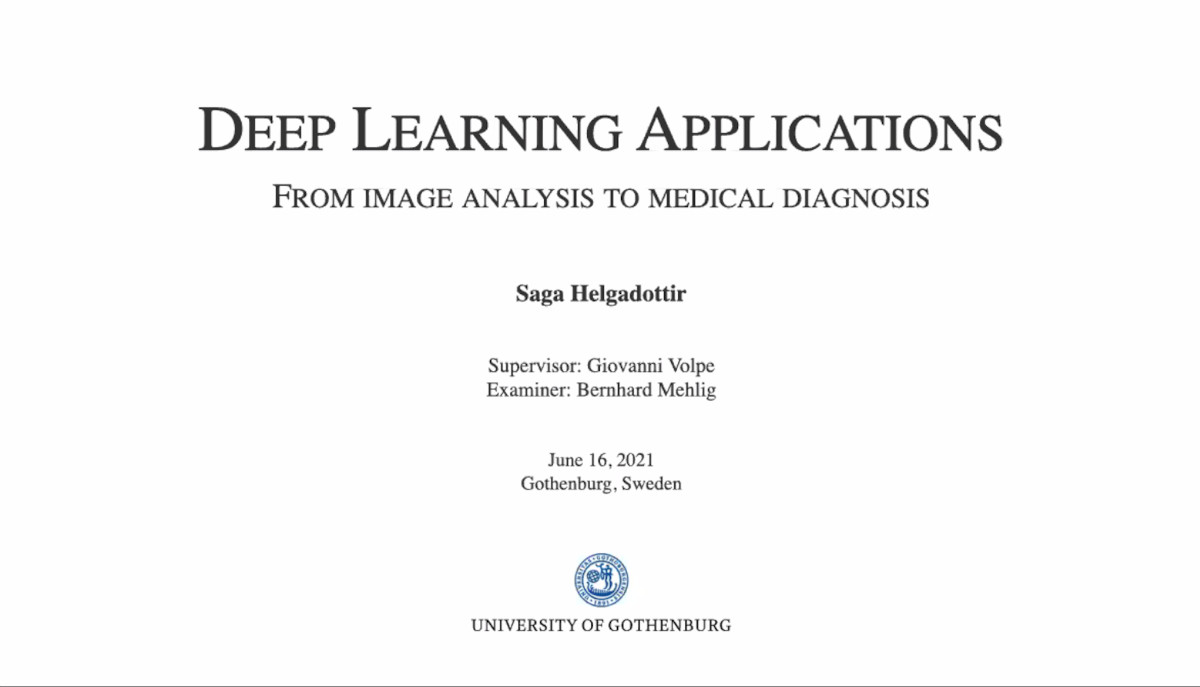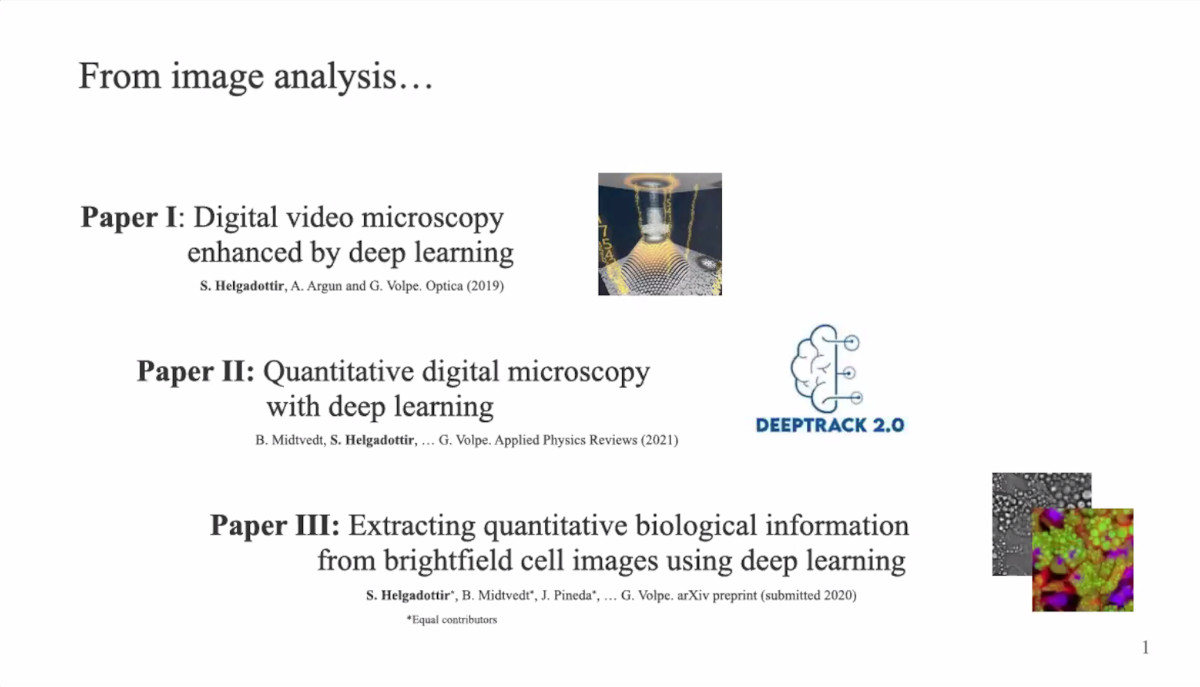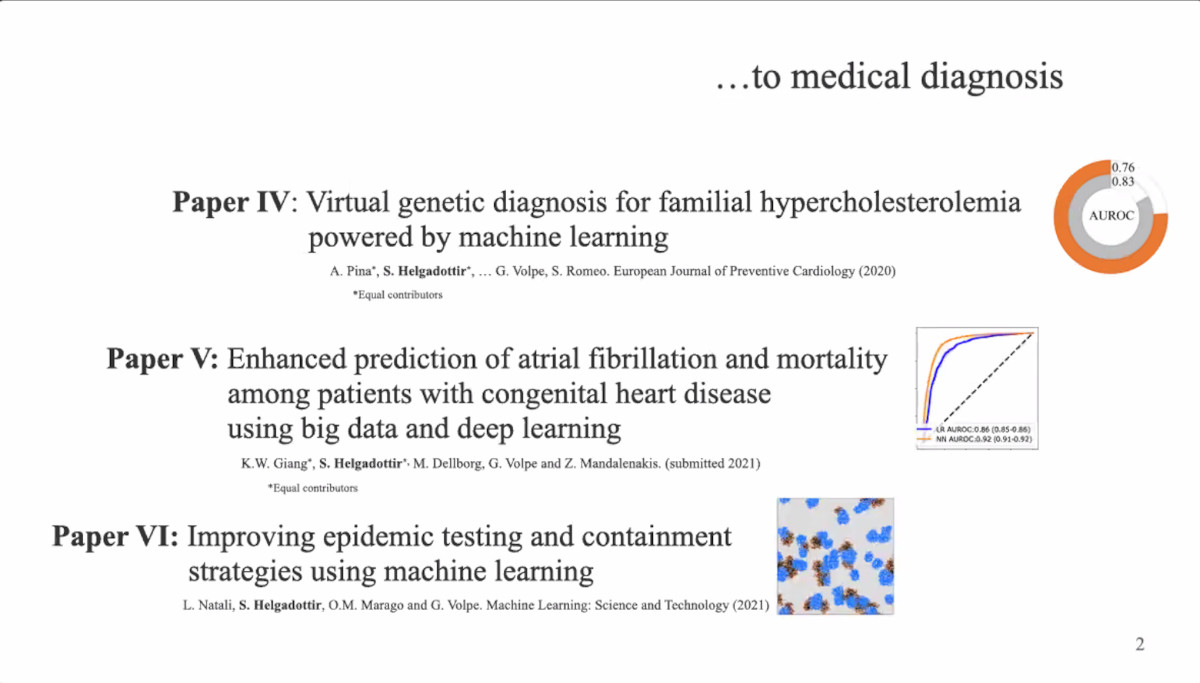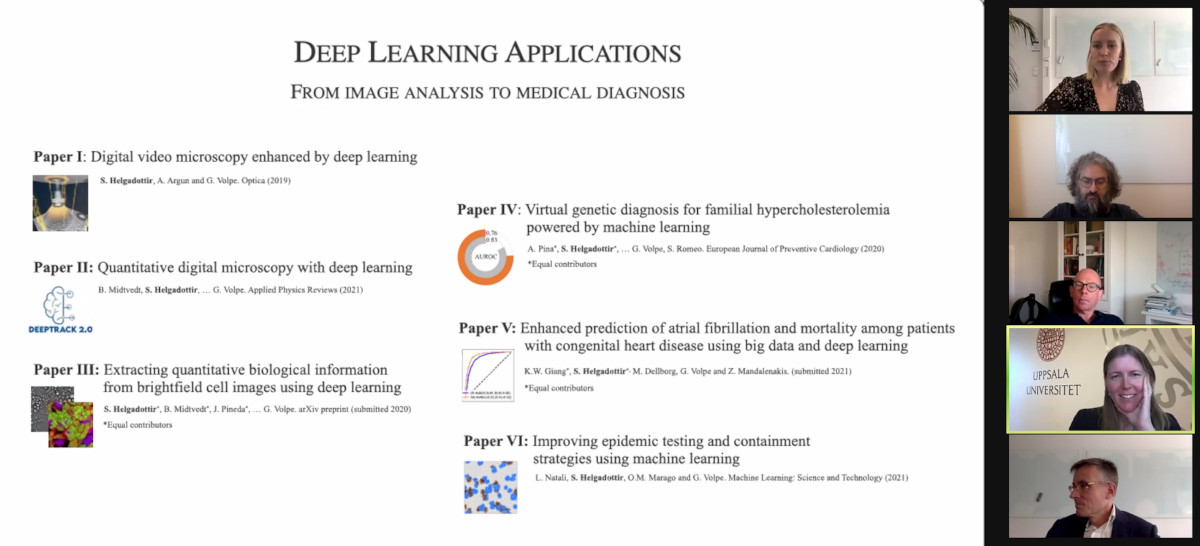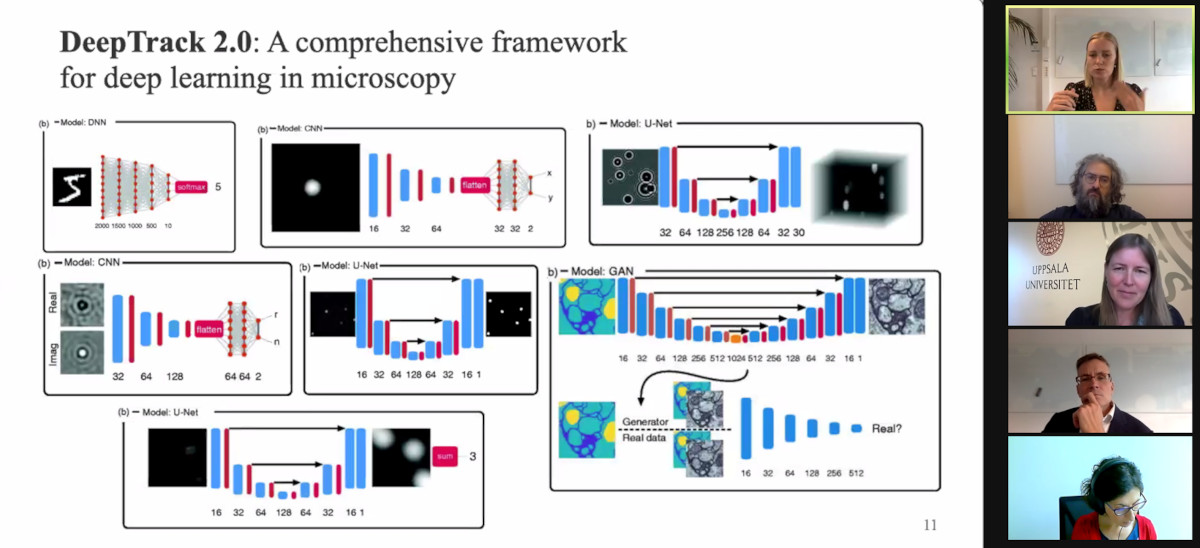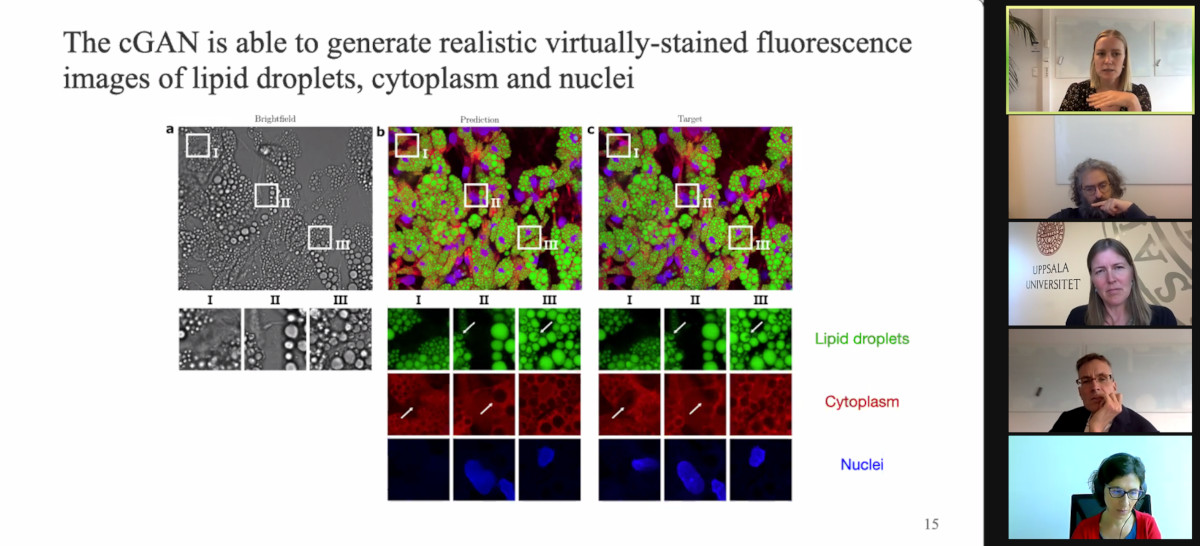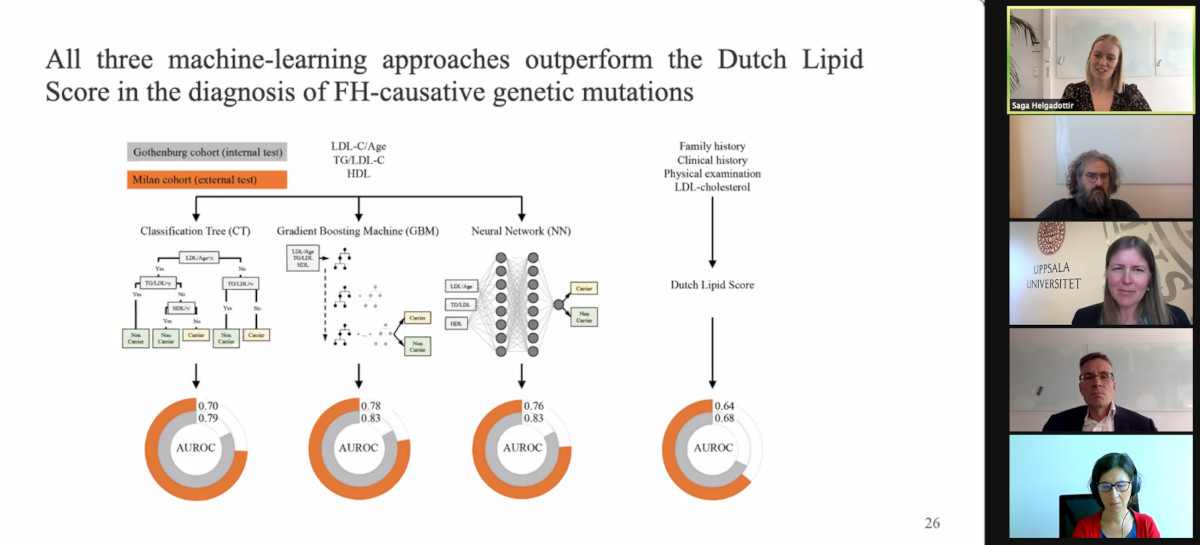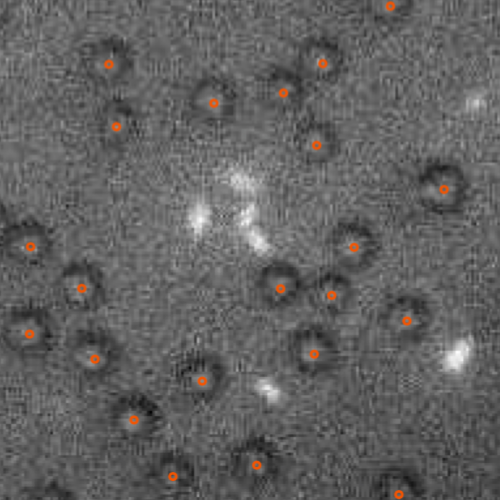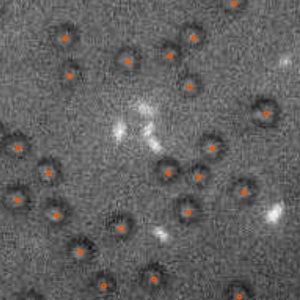
The disputation took place at 9 a.m. digitally via Zoom. A link to the Zoom meeting was published the day before dissertation on the GU website.
Title: Deep Learning Applications – From image analysis to medical diagnosis
Abstract:
Deep learning is a subcategory of machine learning and artificial intelligence. Instead of using explicit rules to perform a desired task as in standard algorithmic approaches, machine-learning algorithms autonomously learn from data to determine the rules for the task at hand. The idea of deep learning has been around since the 1950s but was for a long time limited by available computational power and amount of training data. Once overcome these problems, in recent years, deep learning has made great advances in solving various problems.
In this thesis, I show how deep learning can be applied in image analysis and medical diagnosis, while outperforming standard algorithmic methods and simpler machine-learning methods. I begin with showing that a convolutional neural network trained with simulated particle images is able to track experimental single particles, even in poor illumination conditions. I then show how this inspired the development of an all-in-one software to design, train and validate deep-learning solutions for digital microscopy, from particle tracking and characterization in 2D and 3D to the segmentation, characterization and counting of biological cells and image transformation. I show that this software package can be further used to develop a generative adversarial neural network to virtually stain brightfield images of cells, replacing the traditional chemical staining for a downstream analysis of biological features. I then move on from applications in microscopy and image analysis to show the potential of deep learning in medical diagnosis. I show that dense neural networks perform better than simpler machine-learning algorithm and the clinical standard in the diagnosis of a genetic disease and in the prediction of short- and long-term morbidity in patients with congenital-heart-disease. At last, I have shown that a neural network- powered strategy for testing and isolating individuals adapts to the parameters of a disease outbreak achieves an epidemic containment.
The interdisciplinary nature of the work in this thesis has allowed the application of new technologies developed in the field of physics to solve problems in the fields of biology and biomedicine, as well as overcoming barriers for the continued revolutionization of deep learning in microscopy.
Thesis: http://hdl.handle.net/2077/67506
Supervisor: Giovanni Volpe
Examiner: Bernhard Mehlig
Opponent: Carolina Wählby
Committee: Marj Tonini, Maria Garcia-Parajo, Alexander Rohrbach
Screenshots from Saga Helgadottir’s PhD Thesis defense.
